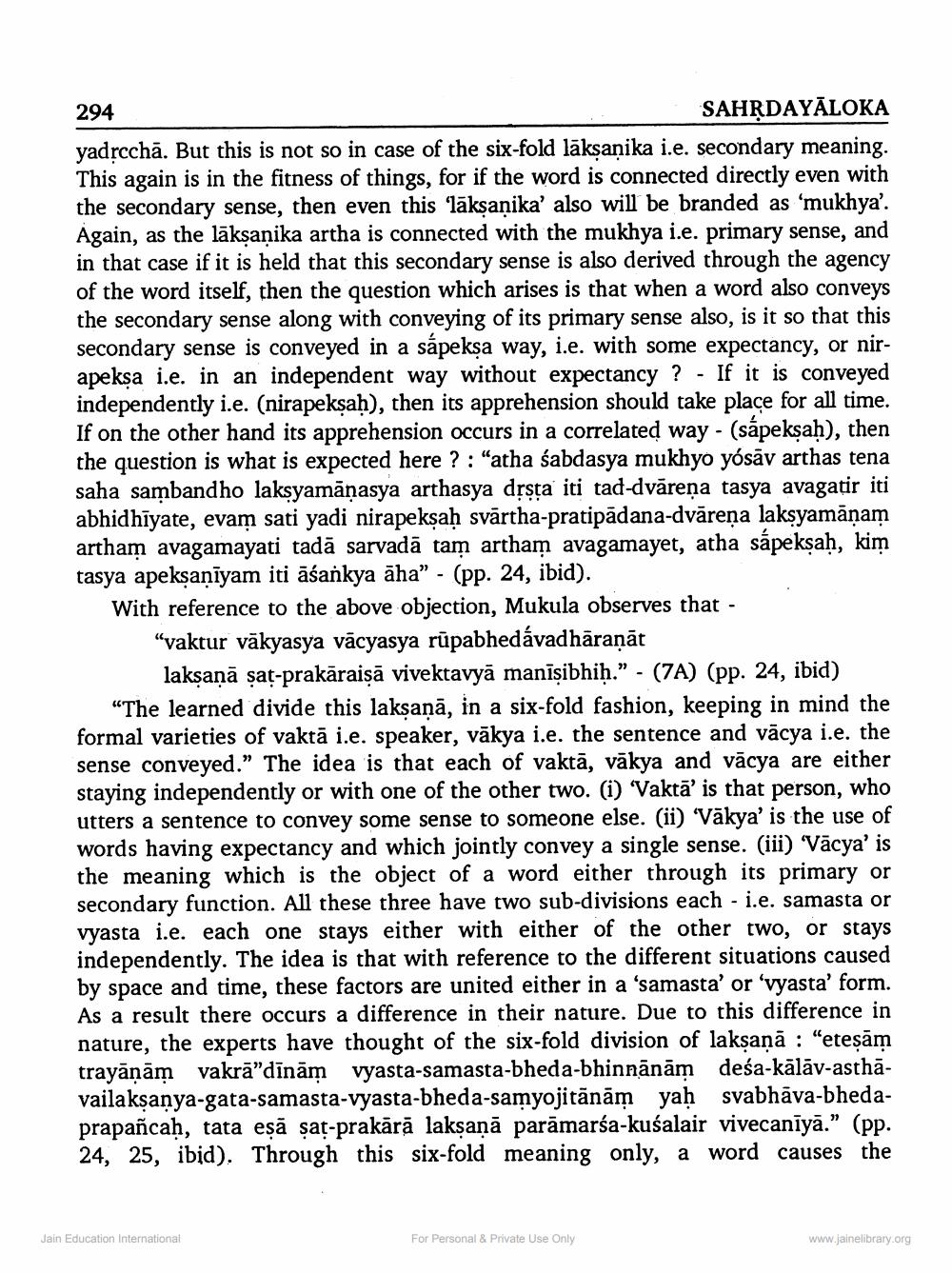________________
294
SAHRDAYĀLOKA yadệcchā. But this is not so in case of the six-fold lākṣanika i.e. secondary meaning. This again is in the fitness of things, for if the word is connected directly even with the secondary sense, then even this 'lākṣaṇika' also will be branded as 'mukhya'. Again, as the lākṣaṇika artha is connected with the mukhya i.e. primary sense, and in that case if it is held that this secondary sense is also derived through the agency of the word itself, then the question which arises is that when a word also conveys the secondary sense along with conveying of its primary sense also, is it so that this secondary sense is conveyed in a sápeksa way, i.e. with some expectancy, or nirapeksa i.e. in an independent way without expectancy ? - If it is conveyed independently i.e. (nirapekṣaḥ), then its apprehension should take place for all time. If on the other hand its apprehension occurs in a correlated way - (sápekṣaḥ), then the question is what is expected here ? : "atha sabdasya mukhyo yósāv arthas tena saha sambandho laksyamāṇasya arthasya drsta iti tad-dvāreņa tasya avagatir iti abhidhīyate, evam sati yadi nirapeksah svārtha-pratipadana-dvārena laksyamānam artham avagamayati tadā sarvadā tam artham avagamayet, atha sápekṣaḥ, kim tasya apekşanīyam iti āśankya āha” - (pp. 24, ibid). With reference to the above objection, Mukula observes that -
“vaktur vākyasya vācyasya rūpabhedávadhāraṇāt
laksaņā șat-prakāraisā vivektavyā manīşibhiḥ.” - (7A) (pp. 24, ibid) “The learned divide this laksaņā, in a six-fold fashion, keeping in mind the formal varieties of vaktā i.e. speaker, vākya i.e. the sentence and vācya i.e. the sense conveyed.” The idea is that each of vaktā, vākya and vācya are either staying independently or with one of the other two. (i) 'Vaktā' is that person, who utters a sentence to convey some sense to someone else. (ii) 'Vākya' is the use of words having expectancy and which jointly convey a single sense. (iii) Vācya' is the meaning which is the object of a word either through its primary or secondary function. All these three have two sub-divisions each - i.e. samasta or vyasta i.e. each one stays either with either of the other two, or stays independently. The idea is that with reference to the different situations caused by space and time, these factors are united either in a 'samasta' or 'vyasta' form. As a result there occurs a difference in their nature. Due to this difference in nature, the experts have thought of the six-fold division of laksana : "etesām trayāņām vakrā"dīnām vyasta-samasta-bheda-bhinnānām deśa-kālāv-asthāvailaksanya-gata-samasta-vyasta-bheda-samyojitānām yah svabhāva-bhedaprapancah, tata esā sat-prakārā laksanā parāmarśa-kušalair vivecanīyā.” (pp. 24, 25, ibid). Through this six-fold meaning only, a word causes the
Jain Education International
For Personal & Private Use Only
www.jainelibrary.org




